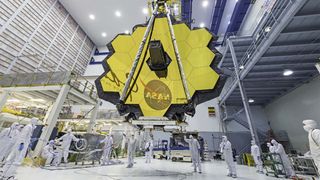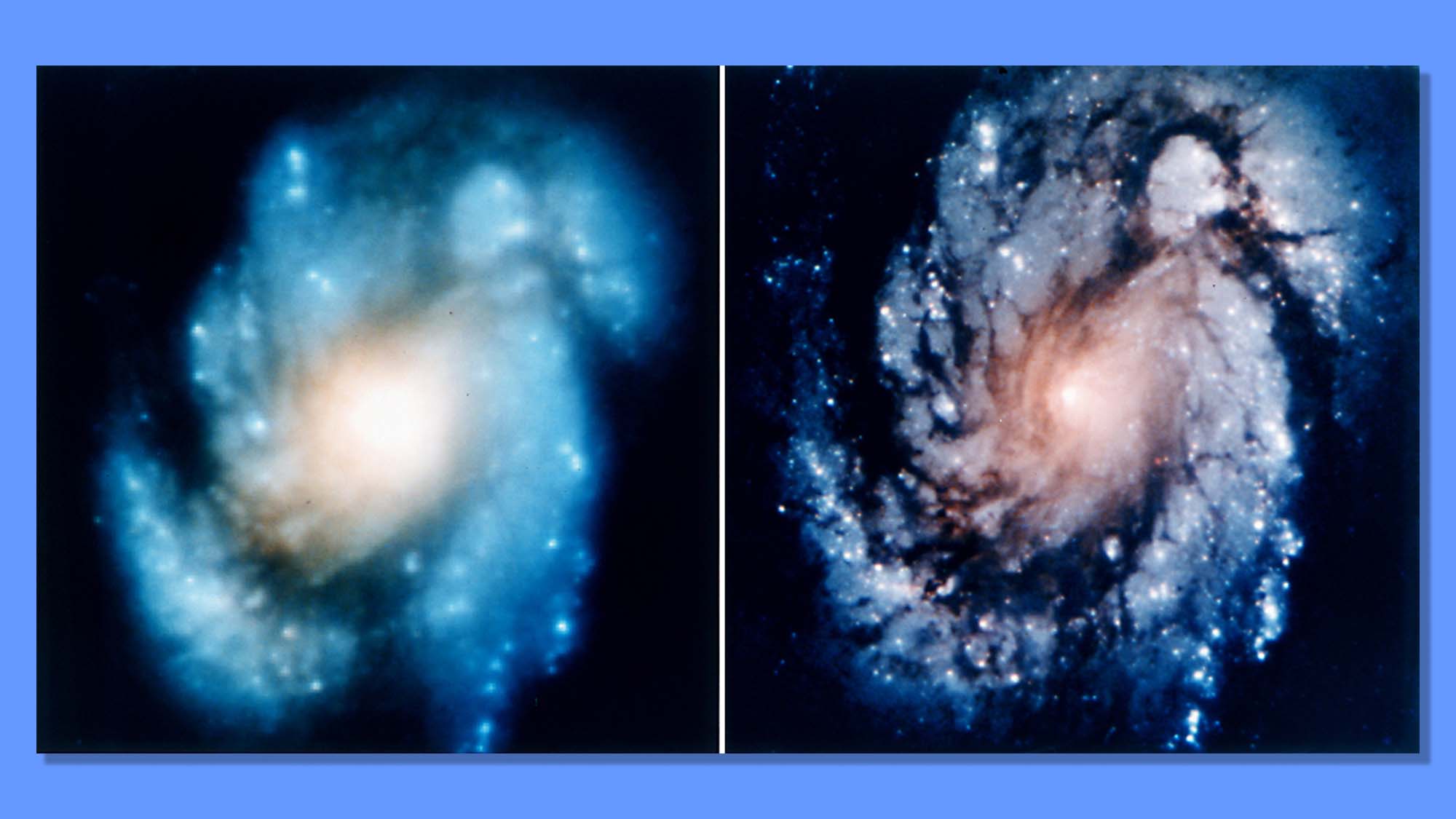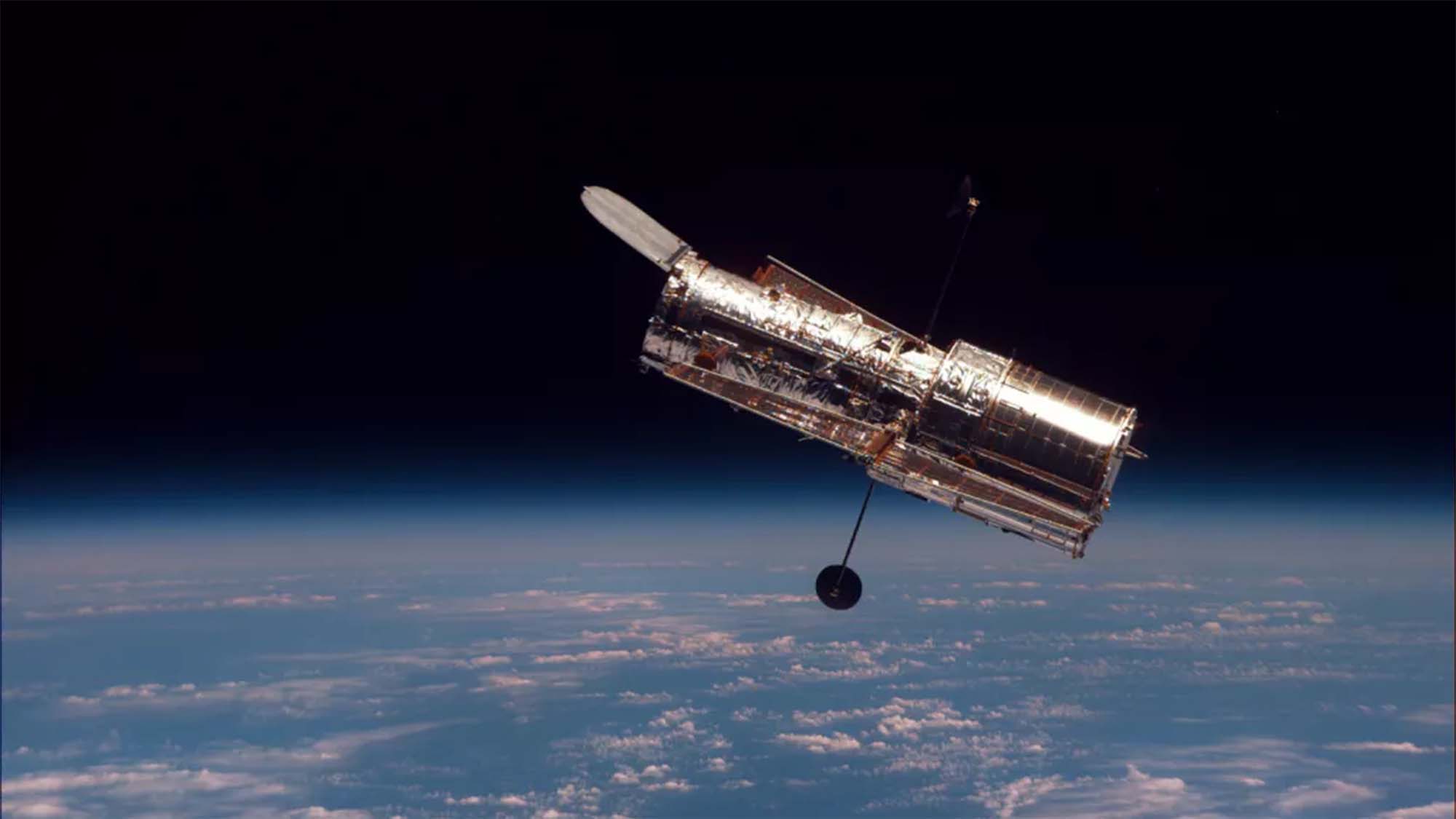The James Webb Space Telescope owes its success to Hubble's bumpy start
The James Webb Space Telescope owes its success to Hubble's bumpy start

*Editor's Note: An before version of this story stated that Conrad Wells described the Hubble aberration as a major embarrassment for NASA. That characterization is incorrect. Mr. Wells just stressed that NASA took the matter of quality control much more than seriously when it came to the James Webb Space Telescope. The story has been updated to analyze Mr. Wells' remarks.*
When the Hubble Space Telescope launched in April 1990, it was an instrument decades in the making. Originally called the Large Space Telescope, Hubble was the about avant-garde telescope always deployed at the fourth dimension and promised to give us a view of the universe unlike anything we'd ever seen before.
Almost as soon every bit we started taking pictures with Hubble, though, it was painfully clear that something was wrong. A "spherical aberration" was blurring the images, distorting the details, and making faint structures in the universe difficult hard to detect.
It was discovered that a slight flaw in the machining process of Hubble'south principal mirror produced an error of simply one-fiftieth the size of a human hair, but it was plenty to reduce the quality of the photos considerably.
Cosmetic eyes were installed on Hubble in a 1993 servicing mission that acted similar a pair of corrective glasses to counter the effect of the abnormality and Hubble went on to return truly monumental images for virtually three decades thereafter, but it was a hard lesson to learn that almost concluded in disaster.
But NASA was determined to learn it before launching the James Webb Space Telescope, one of the highest-stakes deployments NASA has ever undertaken.
What the heck happened with Hubble anyway?

Hubble's primary mirror was fabricated by a visitor called Perkin-Elmer Corporation, starting time in 1979. The 7.ix-foot/two.4-meter surface was ground with incredible precision, but when dealing with the incredibly faint calorie-free of distant stars, nebulae, and galaxies, incredibly precise sometimes isn't enough.
During the grinding process, miscalibrated equipment introduced a defect in the curvature of the mirror of merely ii microns, which is enough to blur the images Hubble takes.
NASA Jet Propulsion Laboratory managing director Lew Allen headed up the investigation into the defect and found that a cogitating null corrector hadn't been measured properly and it directed a polishing machine to shape the wrong curvature into the otherwise perfectly smooth surface.
In fact, the resulting defect exactly matched the flaw in the offending cypher corrector, and a second reflective cipher corrector had really identified the mistake. However, technicians rejected the test results showing the error and assumed a test showing the mirror to exist properly shaped was right.
Allen blasted both the contractor for its lack of quality control safeguards too as NASA for not catching the mistake before launching Hubble. Both these conclusions left a lasting impression on the bureau, and when work began on the James Webb Infinite Telescope just over a decade later on, the conclusions of the Allen study would not exist forgotten.
Preventing another Hubble debacle

Conrad Wells, a Senior Optical Systems Engineer at L3Harris and a lead engineer on Webb'due south optical telescope element, told TechRadar on Mon that NASA made took the affair of quality control very seriously when it came to Hubble's successor.
"When the Hubble Space Telescope went upwards, it had a little chip of a problem," Wells said. "It turns out they didn't do that full, arrangement-level test on the Hubble Infinite Telescope. They tested the primary mirror, they tested the secondary mirror, they tested all the systems in it, just they never took light from one side of it all the way to the other."
That kind of full-system testing matters, since information technology is what most closely replicates the actual operation of the telescope in practice. Fortunately, Hubble was able to exist repaired and the defect corrected, and those repairs and what engineers learned from that procedure lives on in Webb in a couple of ways.
First: test, examination, examination. In order to carry out the kinds of tests that would instill conviction in the James Webb Infinite Telescope, L3Harris engineers used the second largest vacuum bedchamber in the world and brought it down to less than 25 degrees Kelvin using compressed liquid helium to reproduce the operating weather Webb will be working under at L2.

They so went through every step in the procedure of aligning the eighteen panels that brand up the primary mirror of the telescope just as engineers are gear up to practise in the next couple of weeks, downwards to simulating starlight with fiber optics and ensuring that calorie-free accurately reaches all iv of Webb's main instruments.
They also made sure that those instruments are all confocal, and then that they are all able to focus on the aforementioned object properly. All while operating the optics at temperatures approaching -400 degrees Fahrenheit in a vacuum.
"All of united states of america take a loftier caste of confidence that the optical organisation is going to piece of work well," Wells said. "This is the second time that we've done information technology, it's not the first fourth dimension. It's going to work. NASA's insistence, and our execution of that system level exam, is going to make this mission a success."
Another of import legacy of that initial Hubble aberration is in the alignment and focusing of Webb'south primary mirror, which is direct derived from the engineering and techniques used to correct the original Hubble defect.
"The engineering science that they used to test [the corrective optics] in space," Wells explained, "imaging starlight through it, and looking at that blurred image as you become to focus, that's actually how the James Webb Infinite Telescope is going to align itself on orbit."
That process is now underway and will have several weeks at least, just Wells isn't nervous near how Webb'south first light images are going to plow out. Subsequently all, he tested the alignment of the mirrors himself.
"It's going to work."
- NASA's James Webb Space Telescope has reached its destination. Now what?
Source: https://www.techradar.com/news/the-james-webb-space-telescope-owes-its-success-to-hubbles-bumpy-start
Posted by: sparksmounten.blogspot.com




0 Response to "The James Webb Space Telescope owes its success to Hubble's bumpy start"
Post a Comment